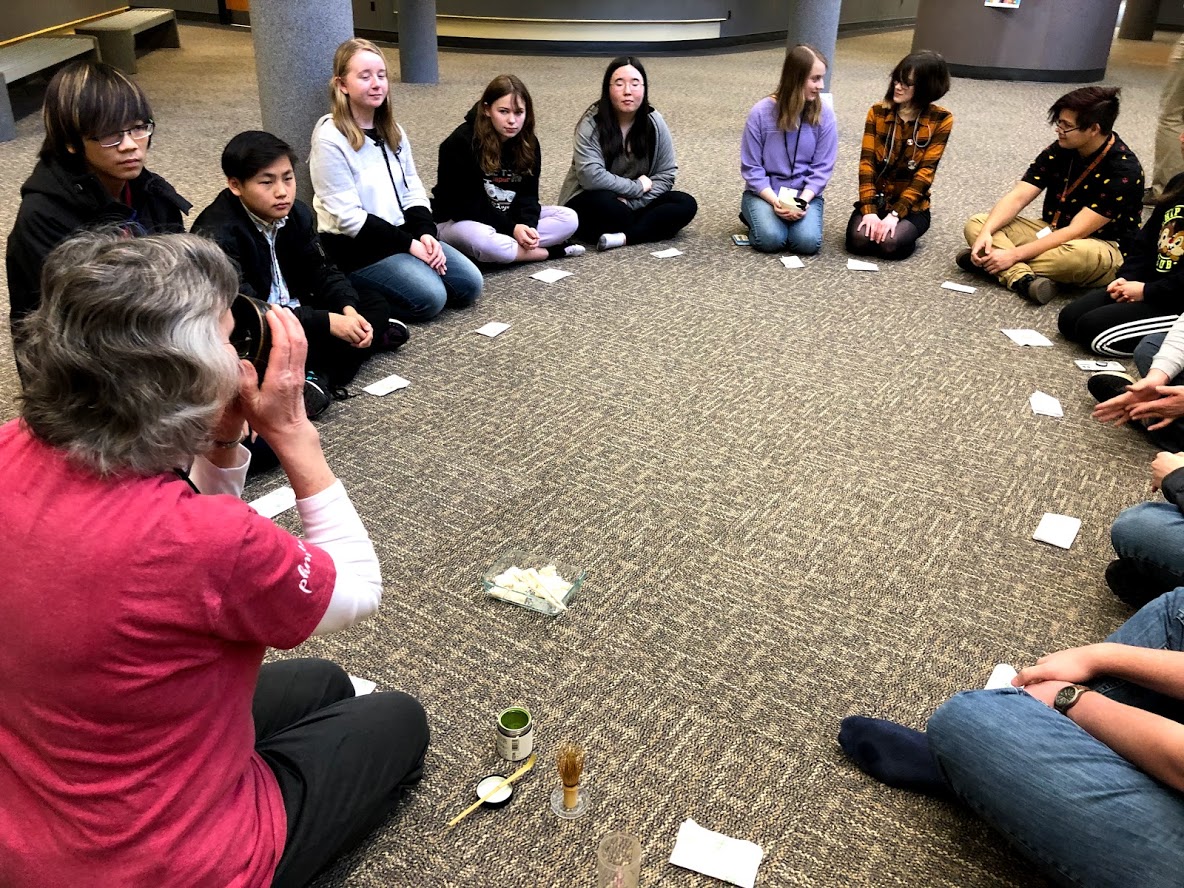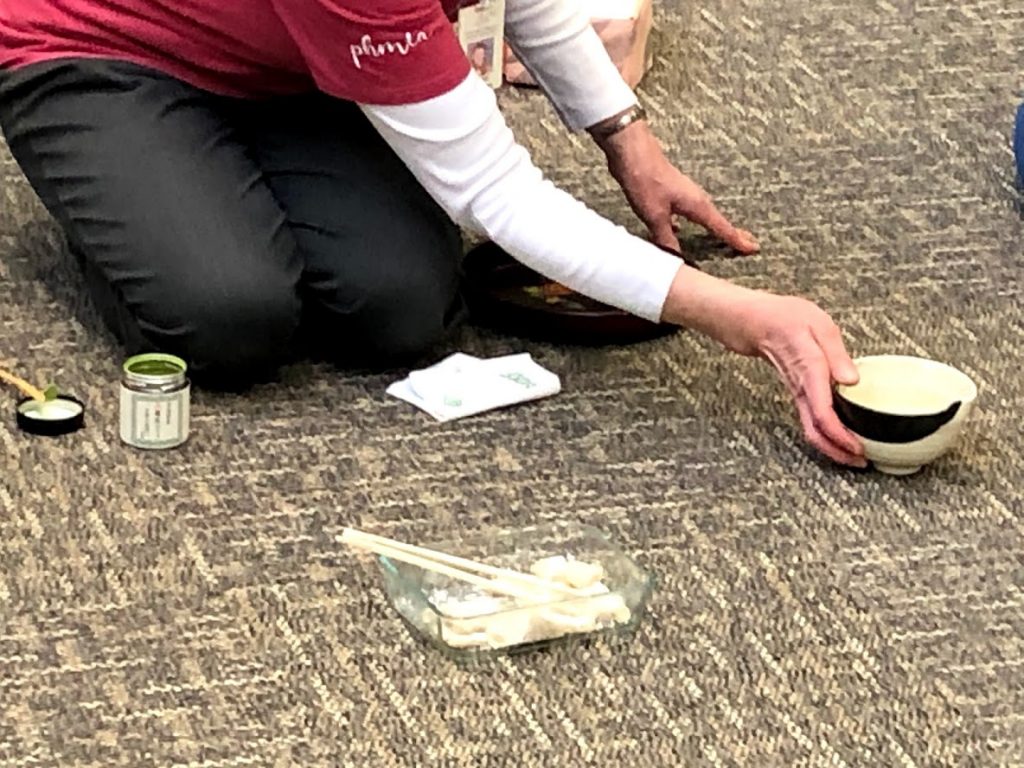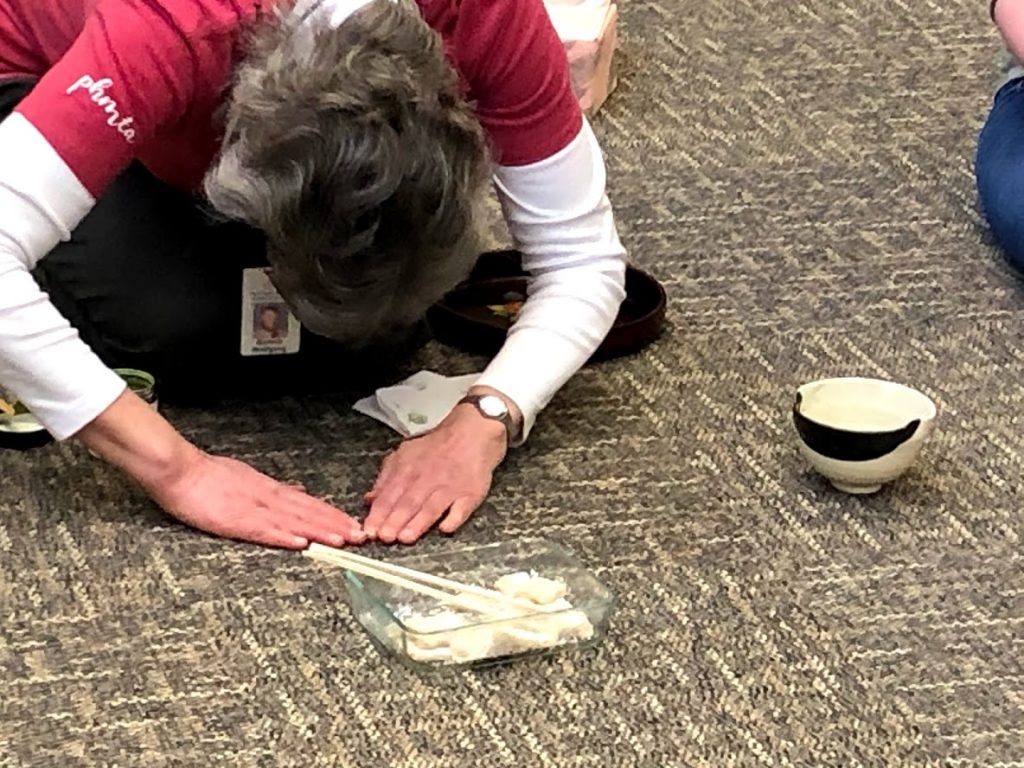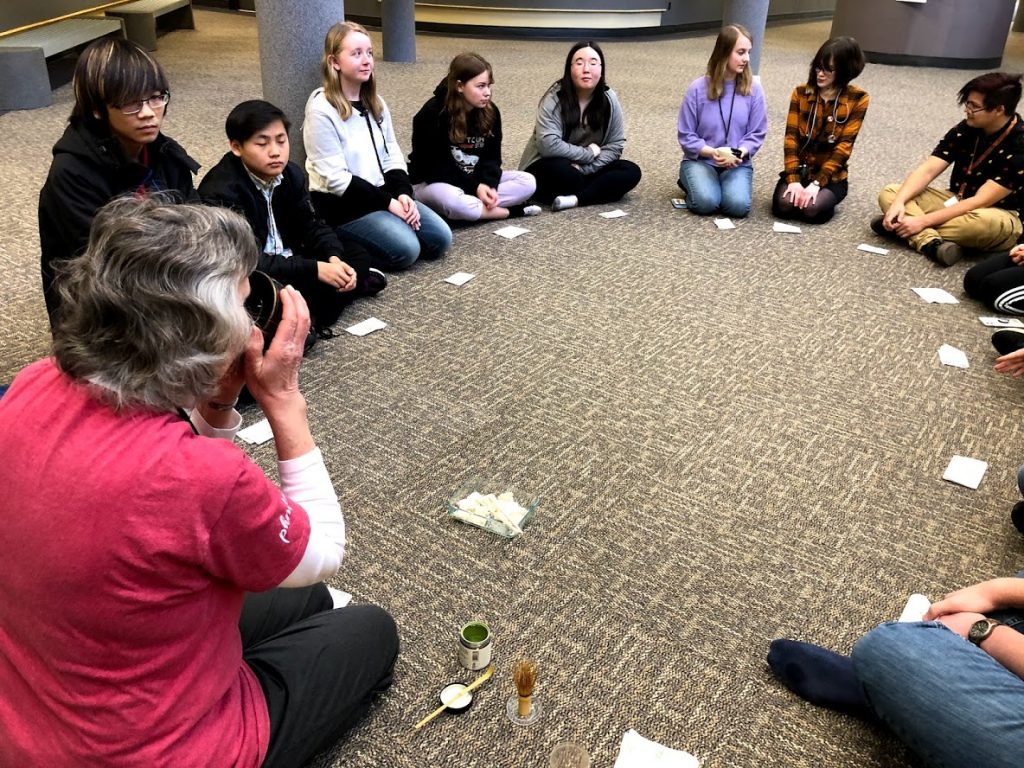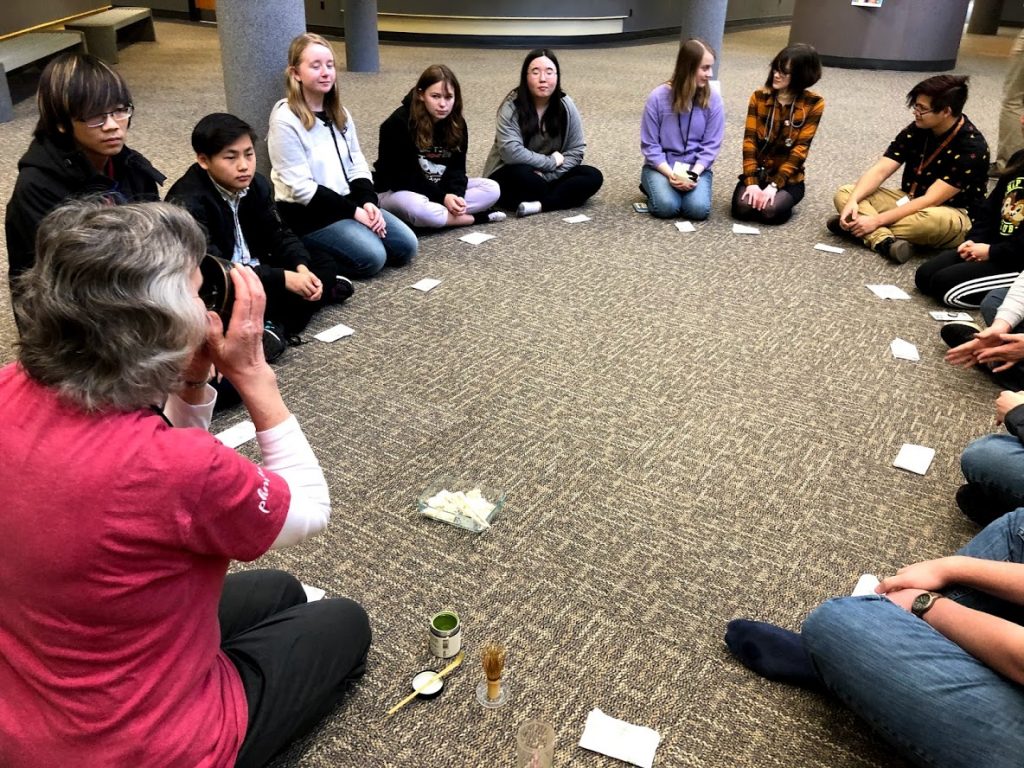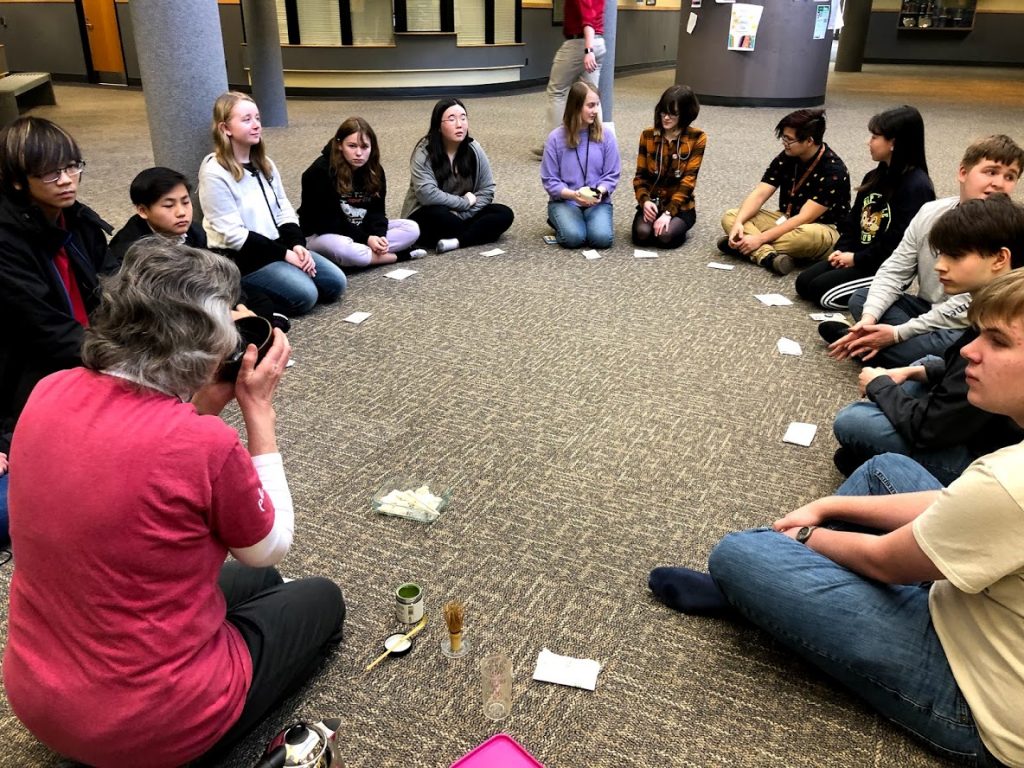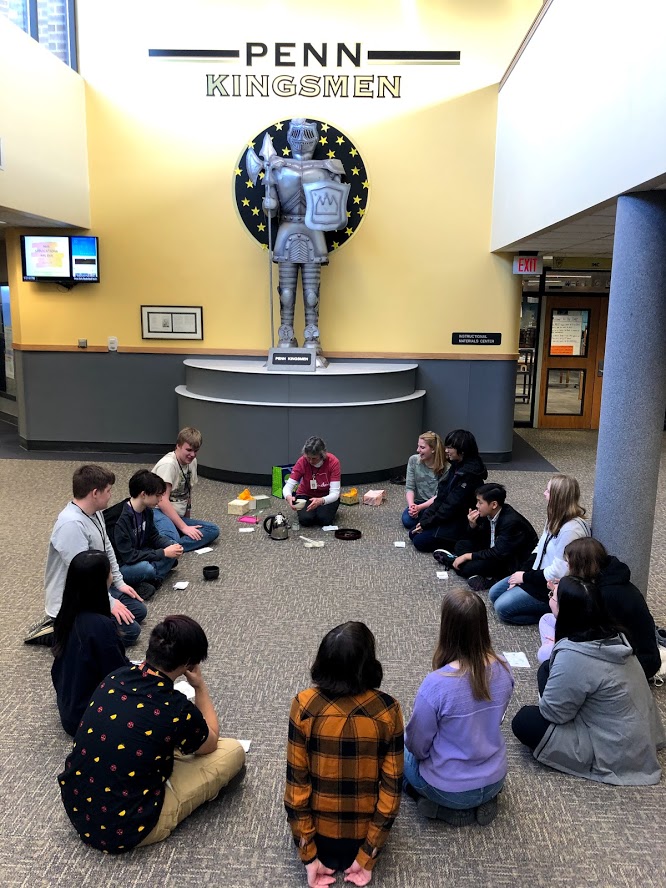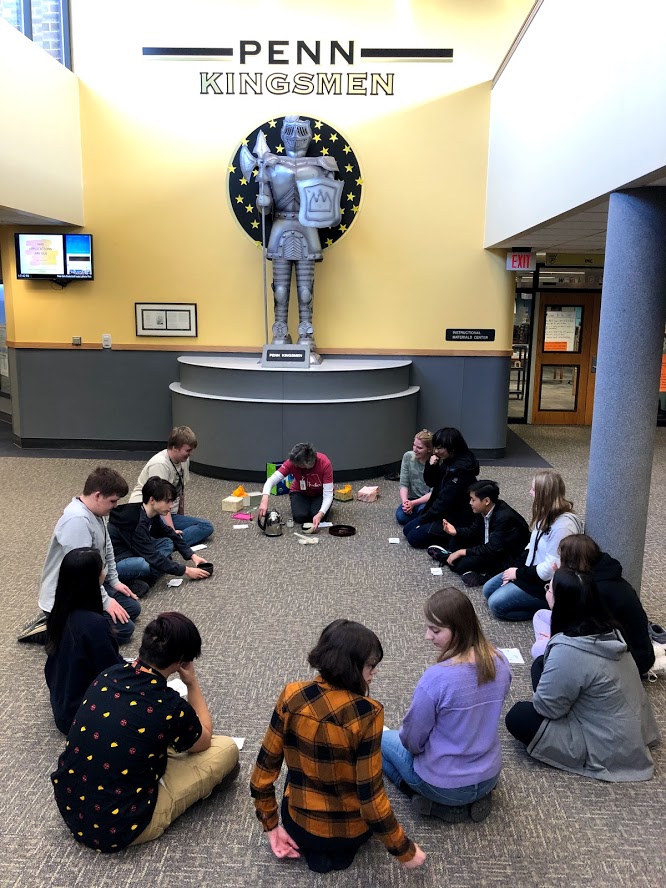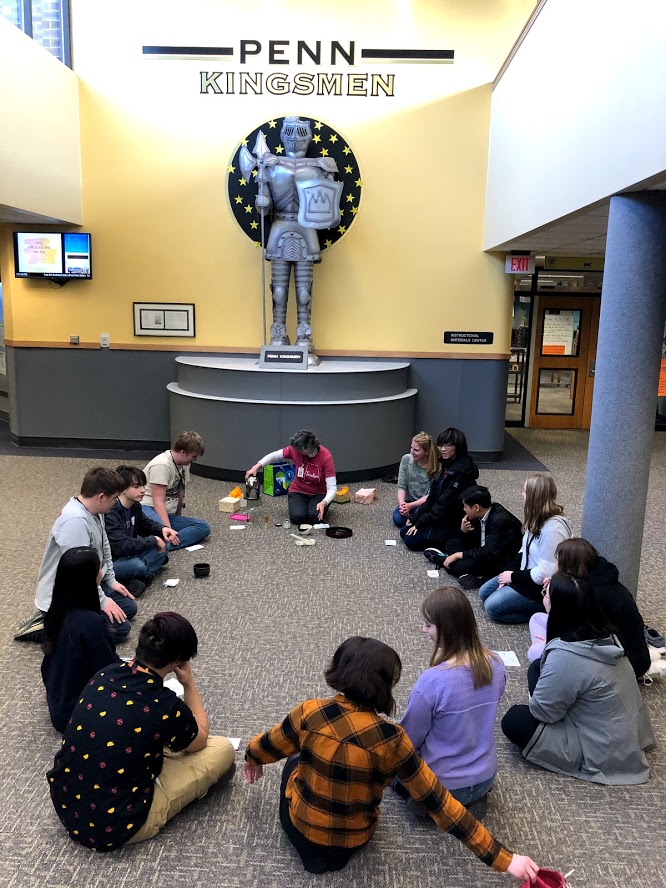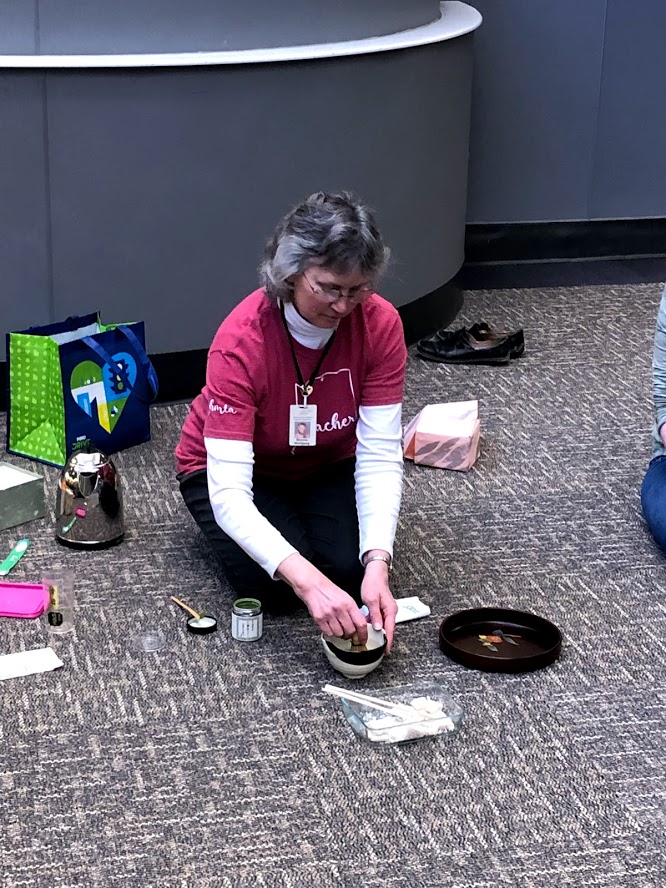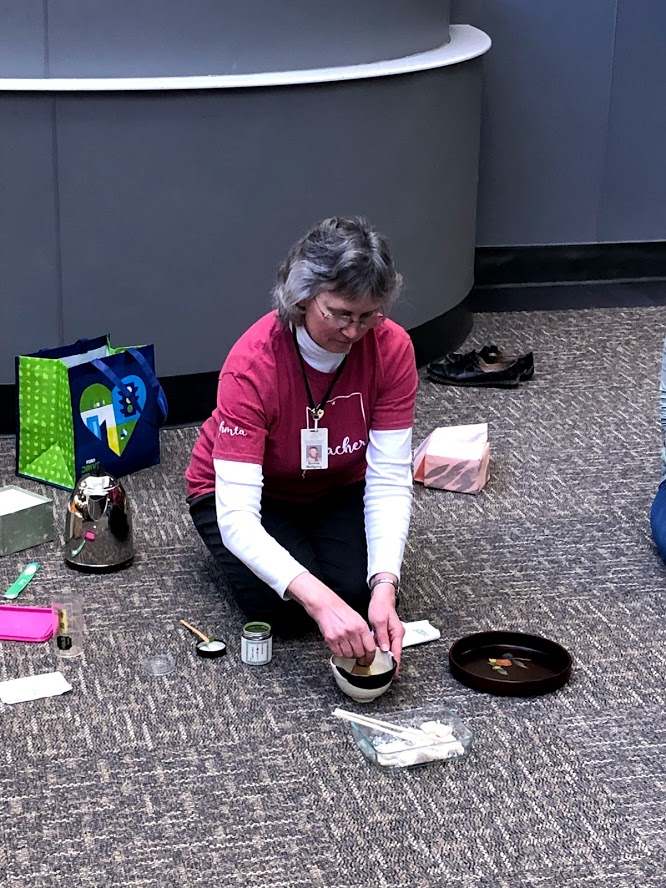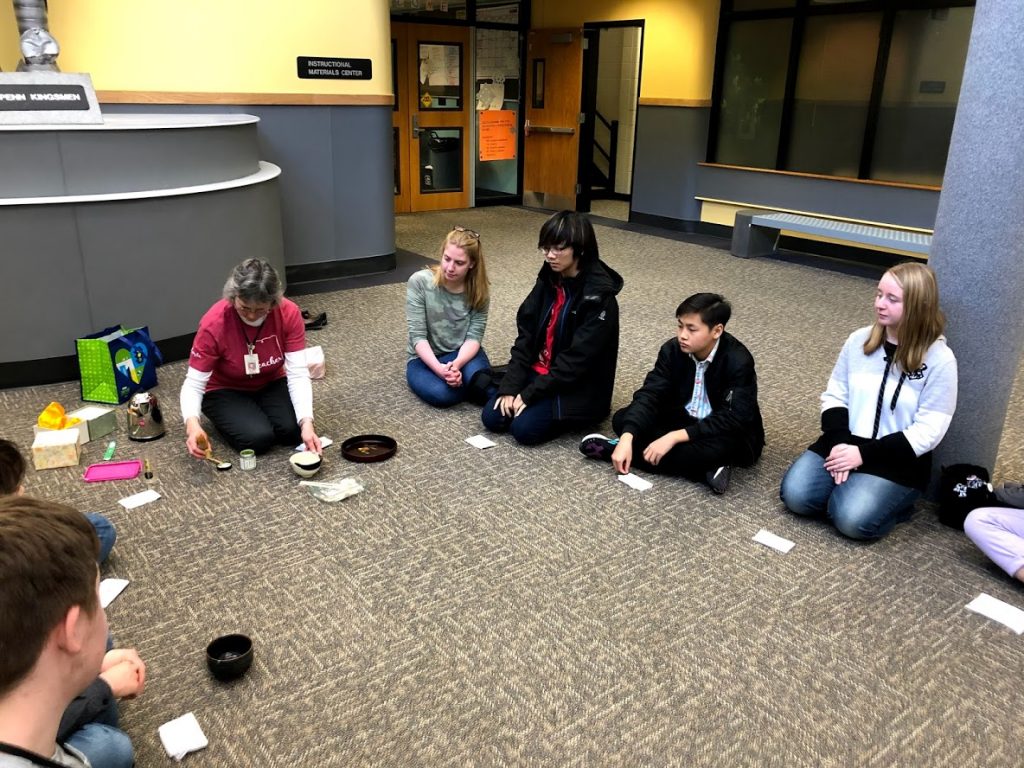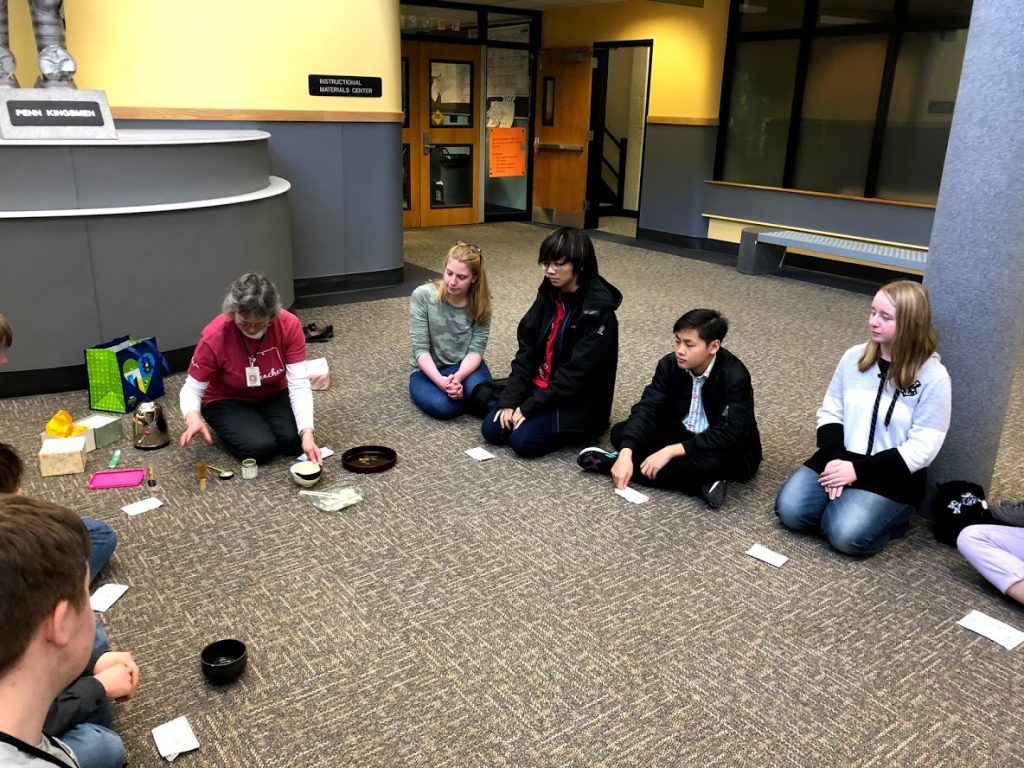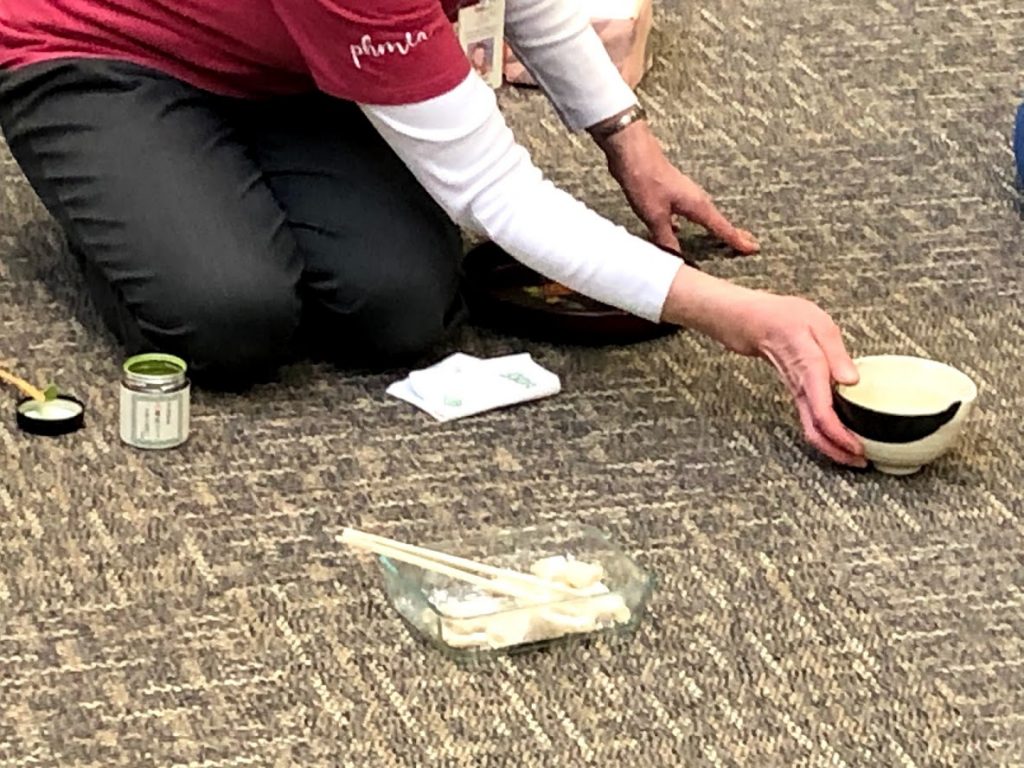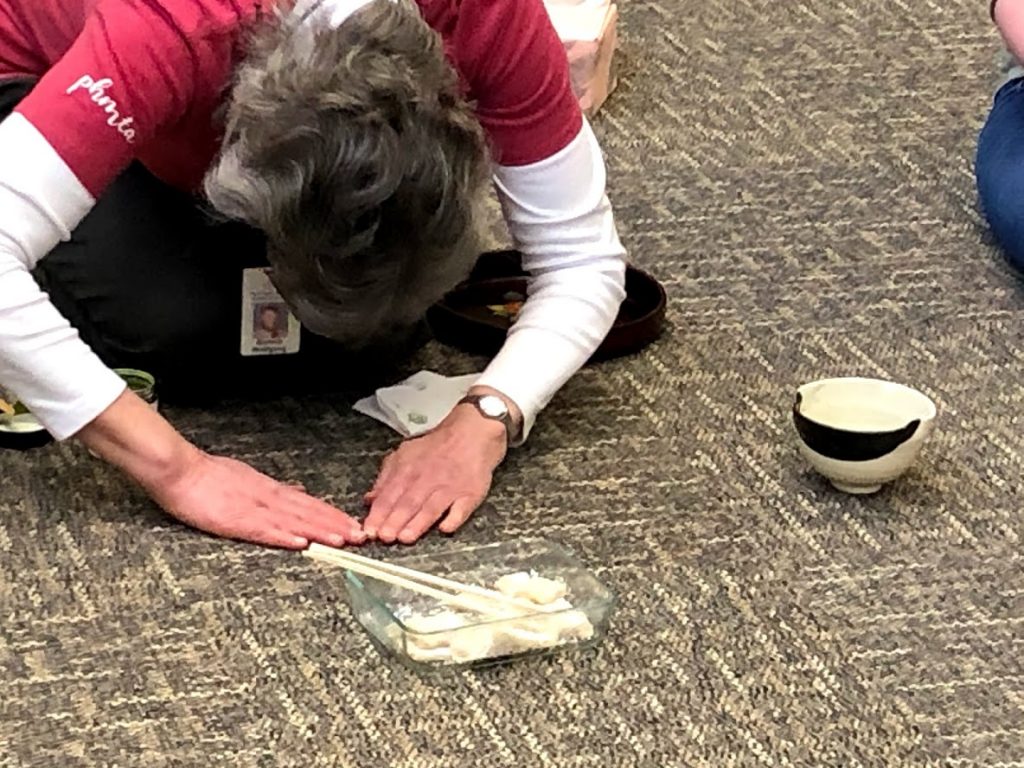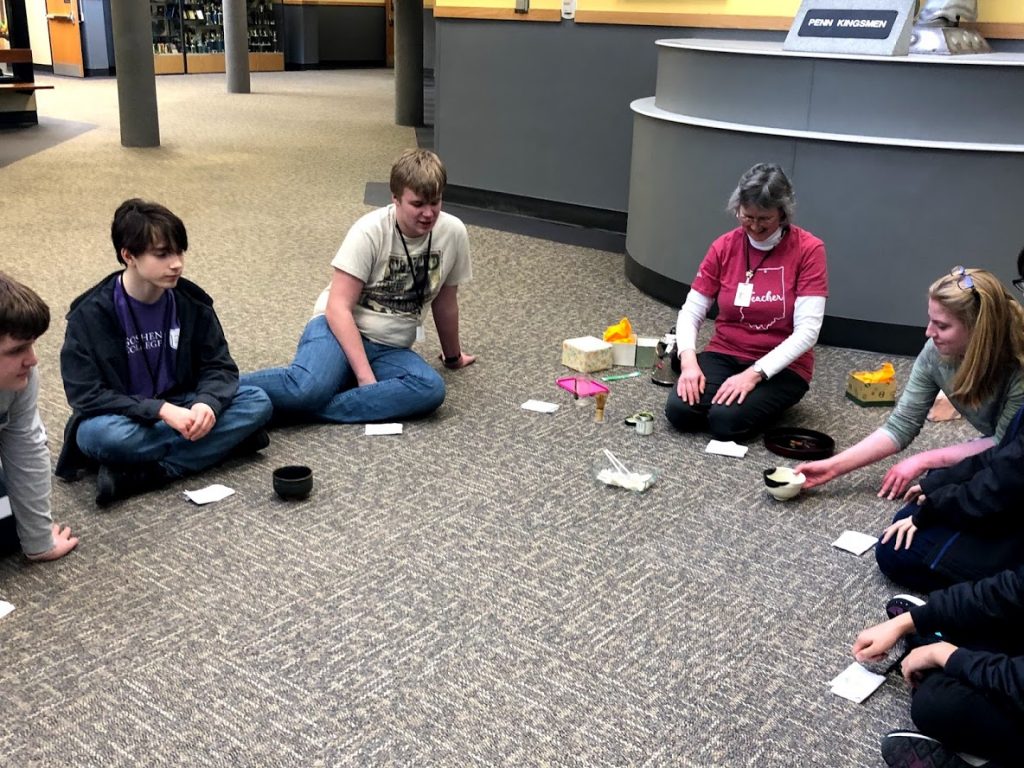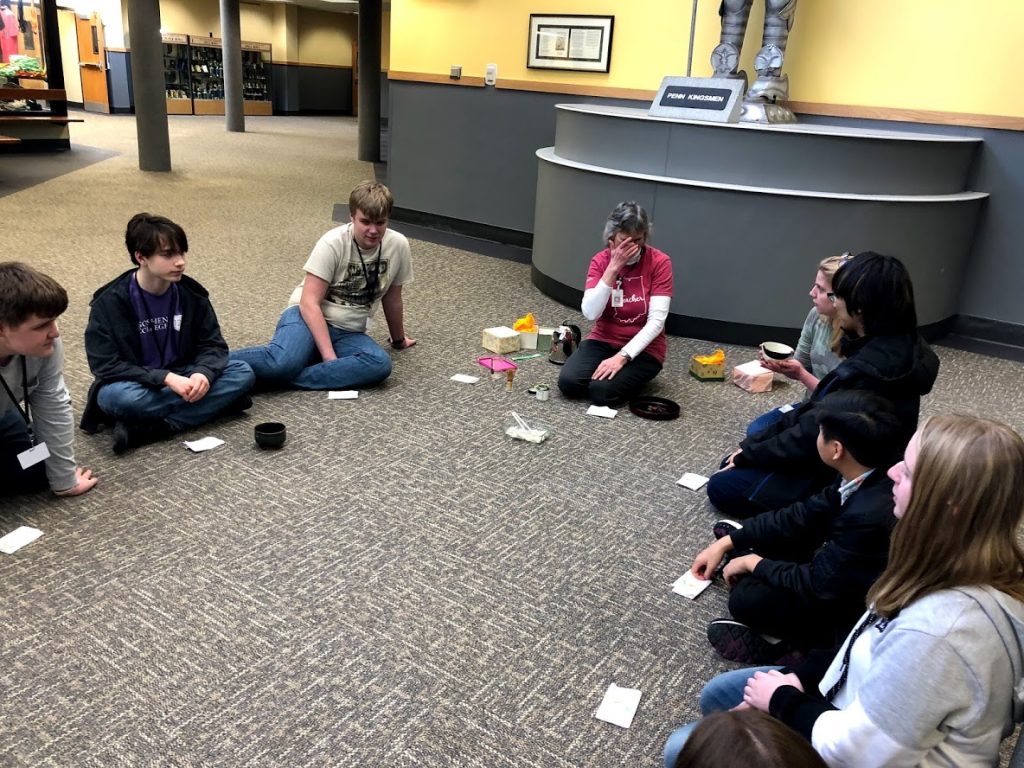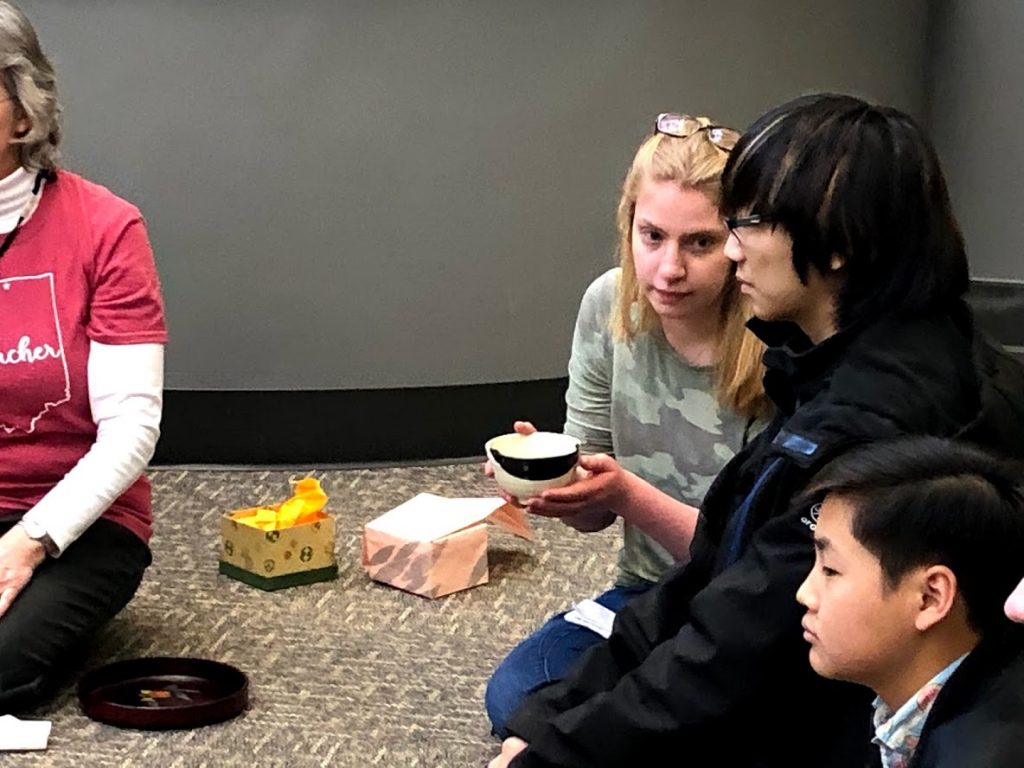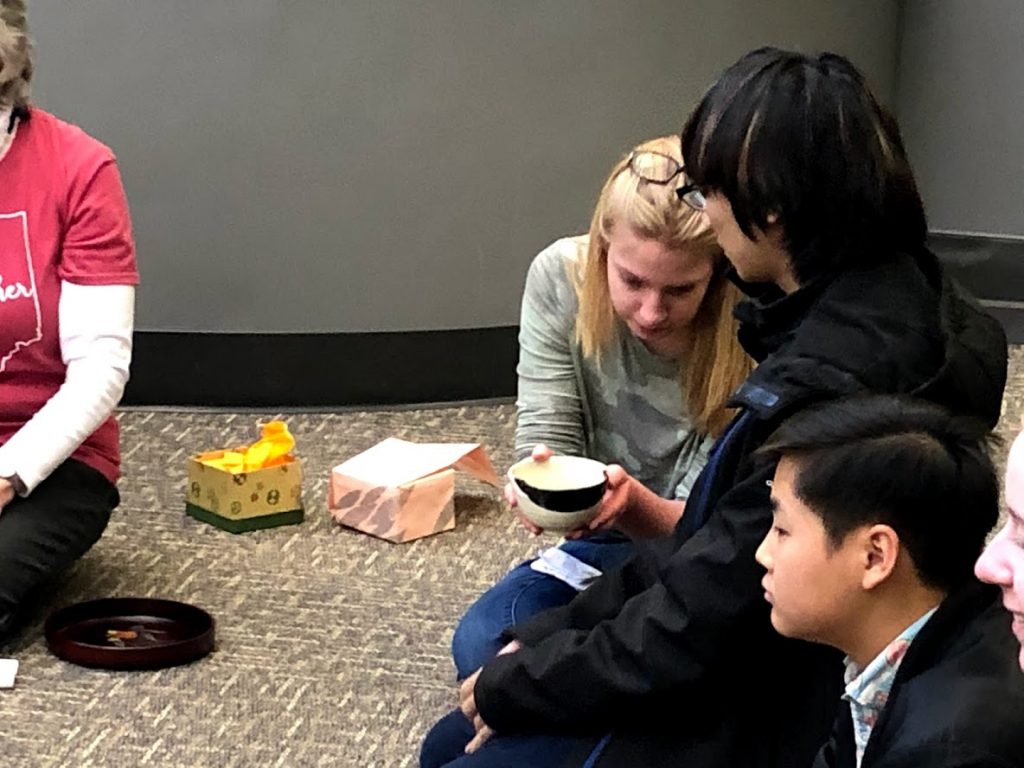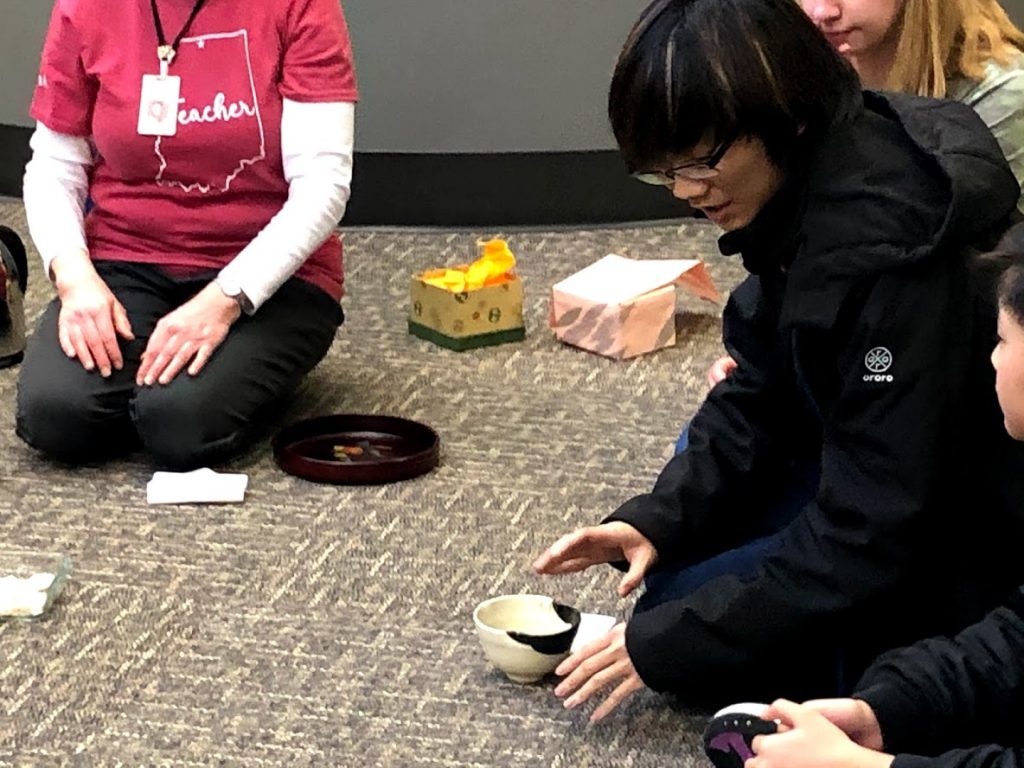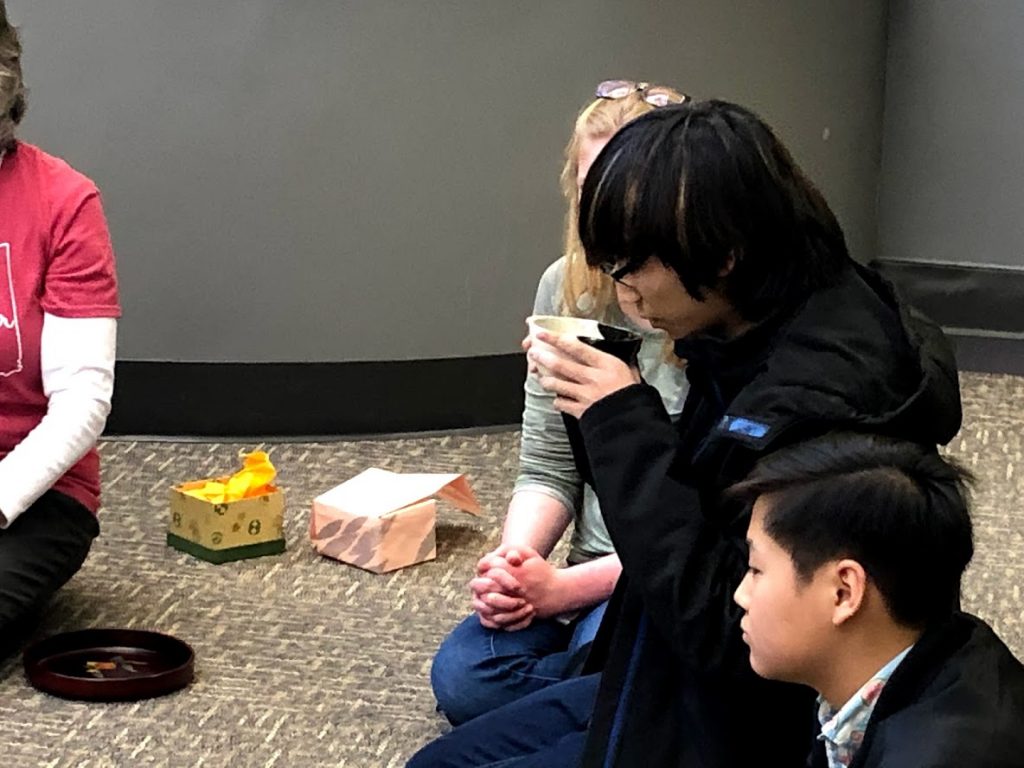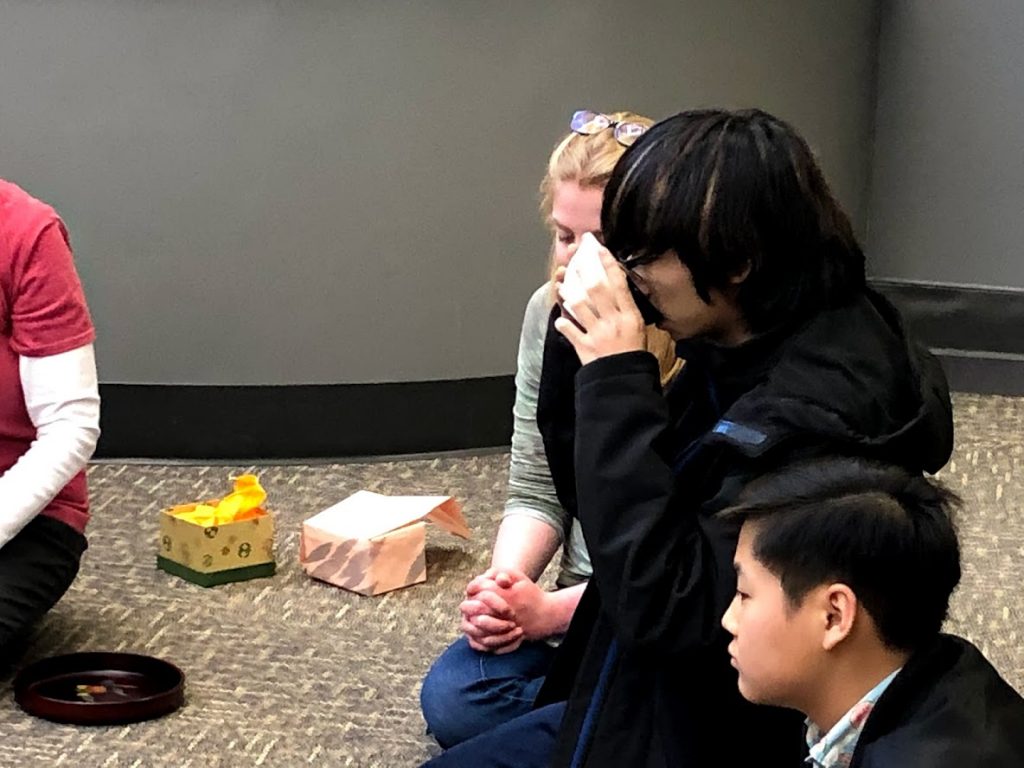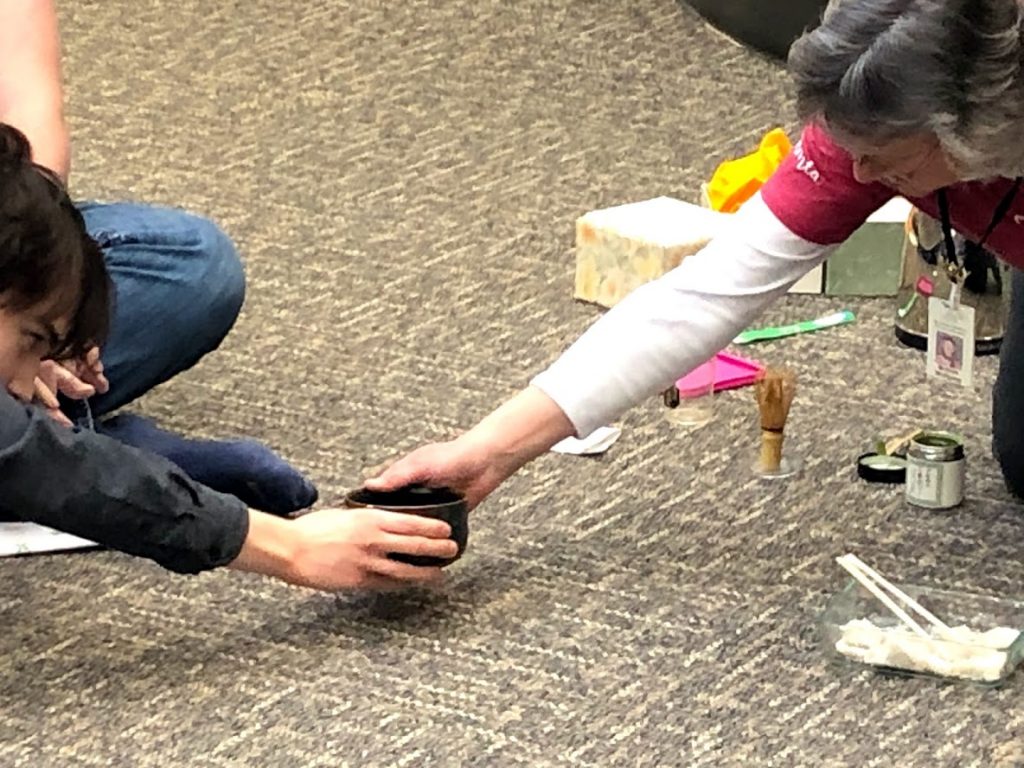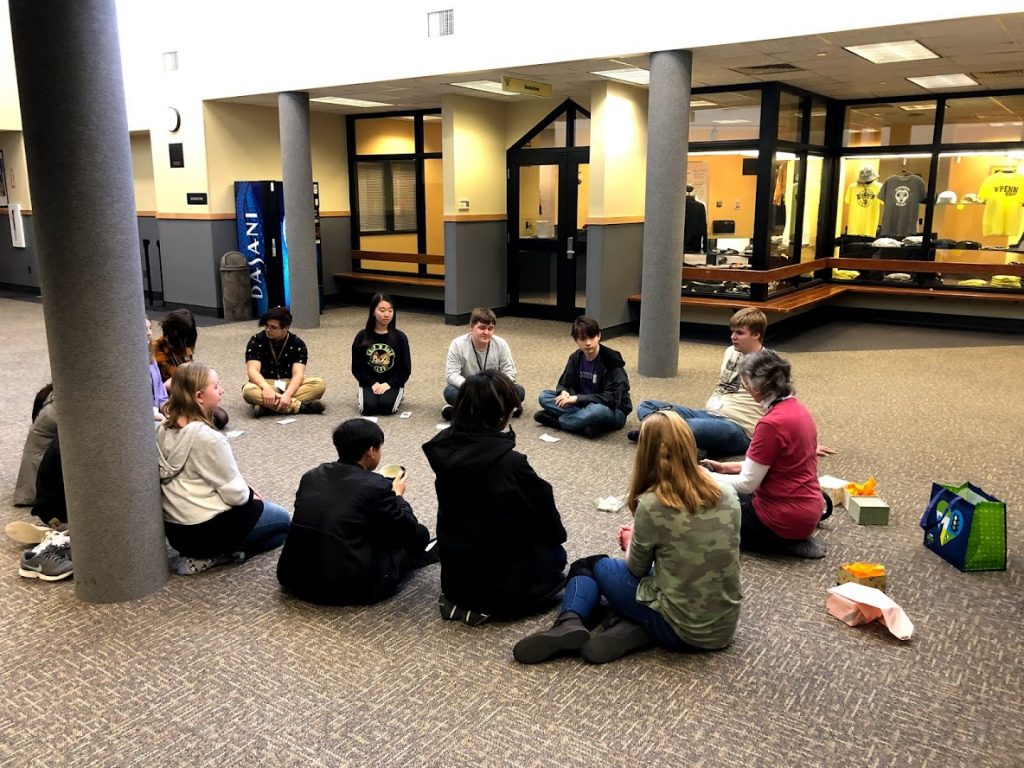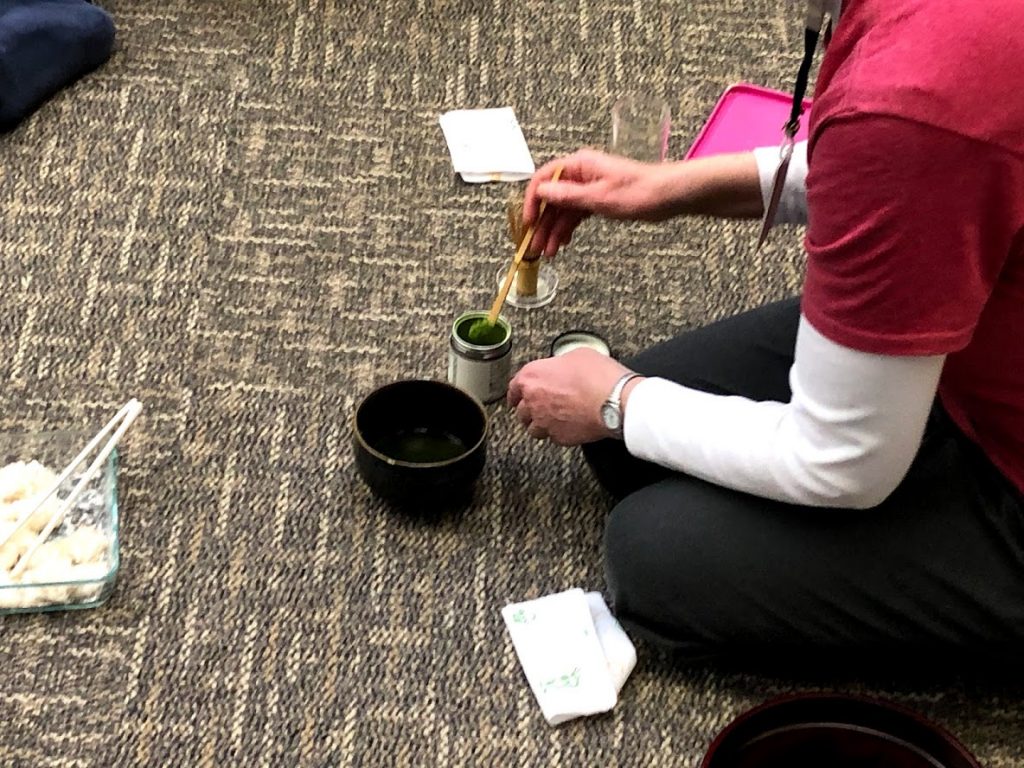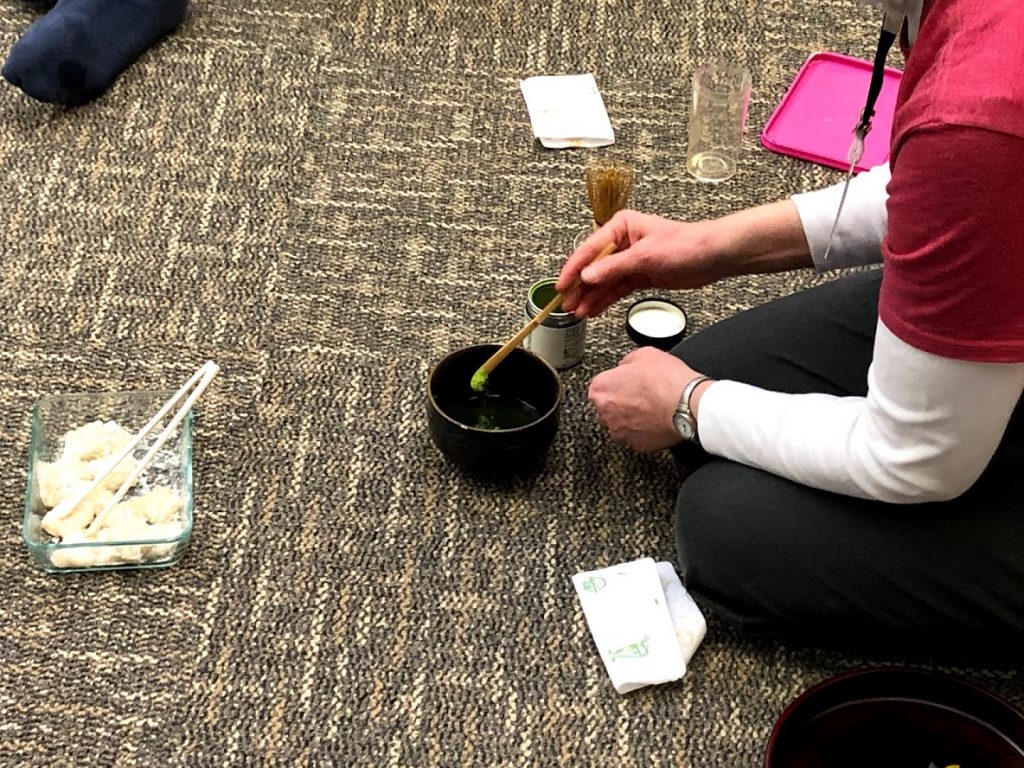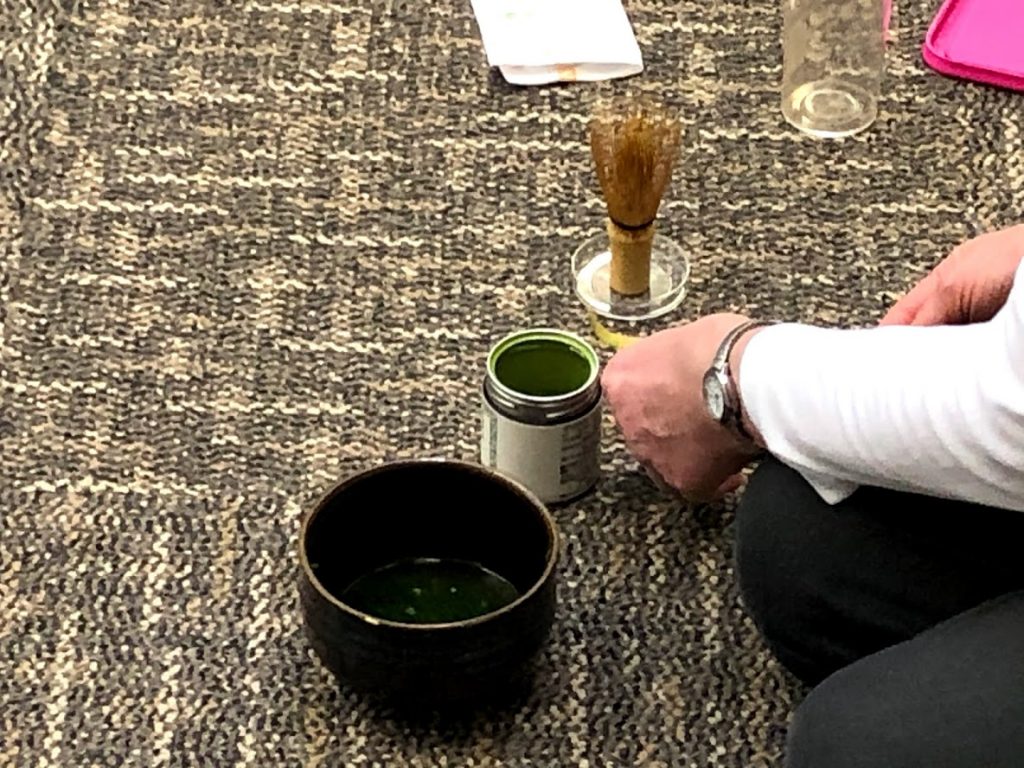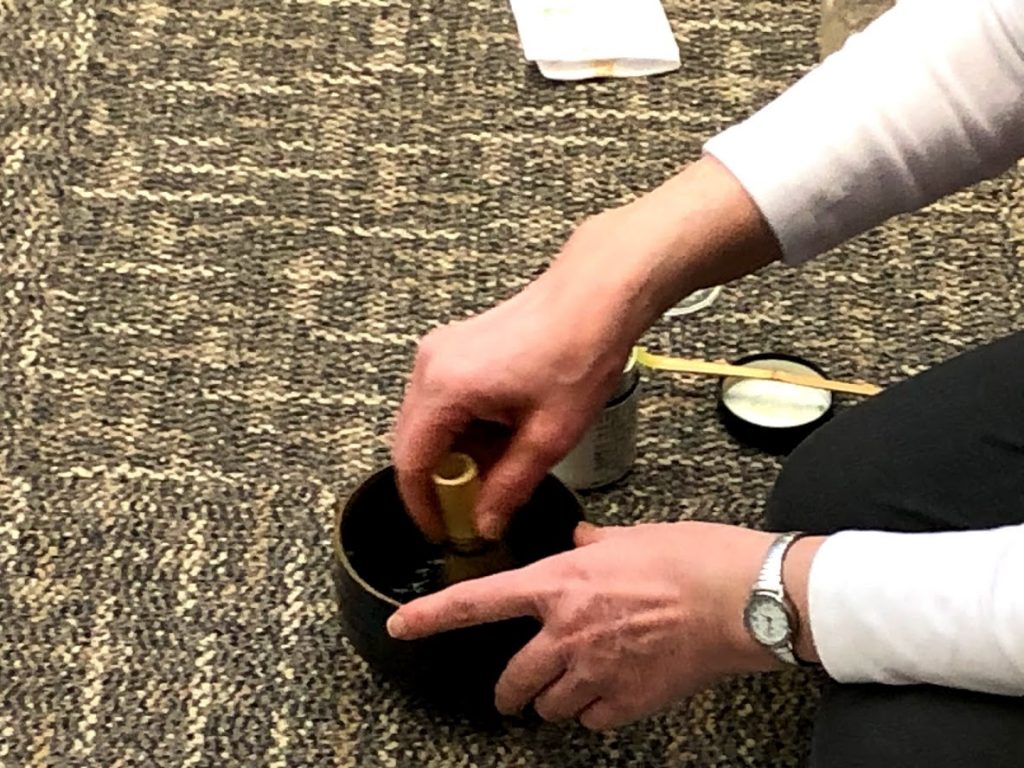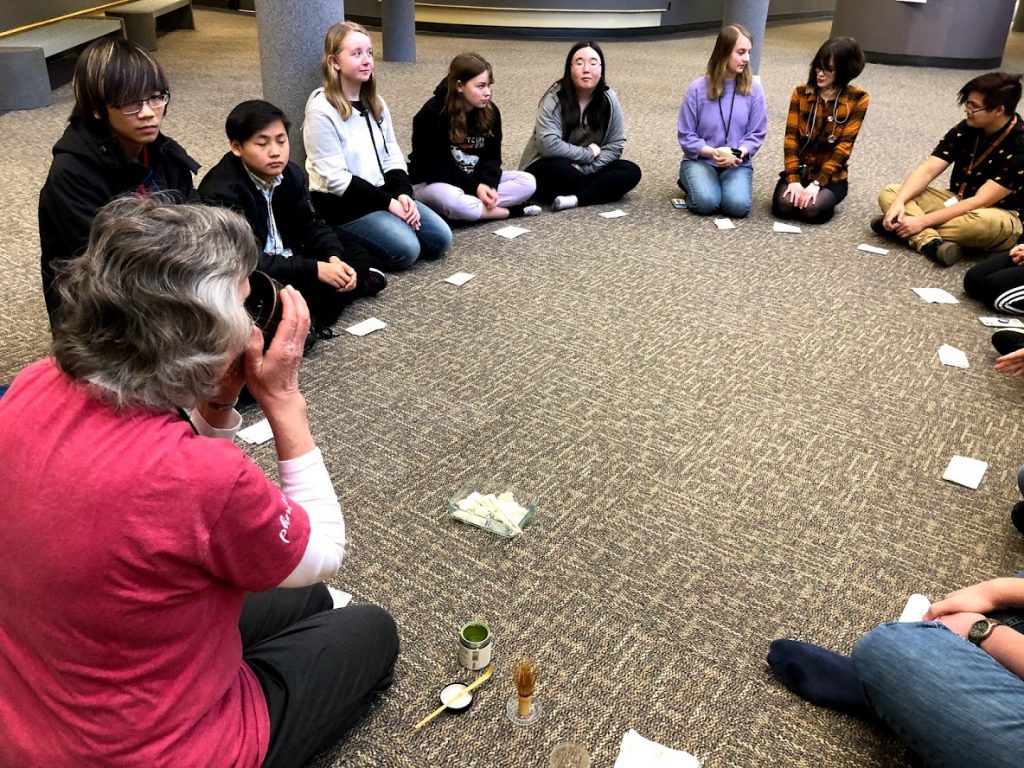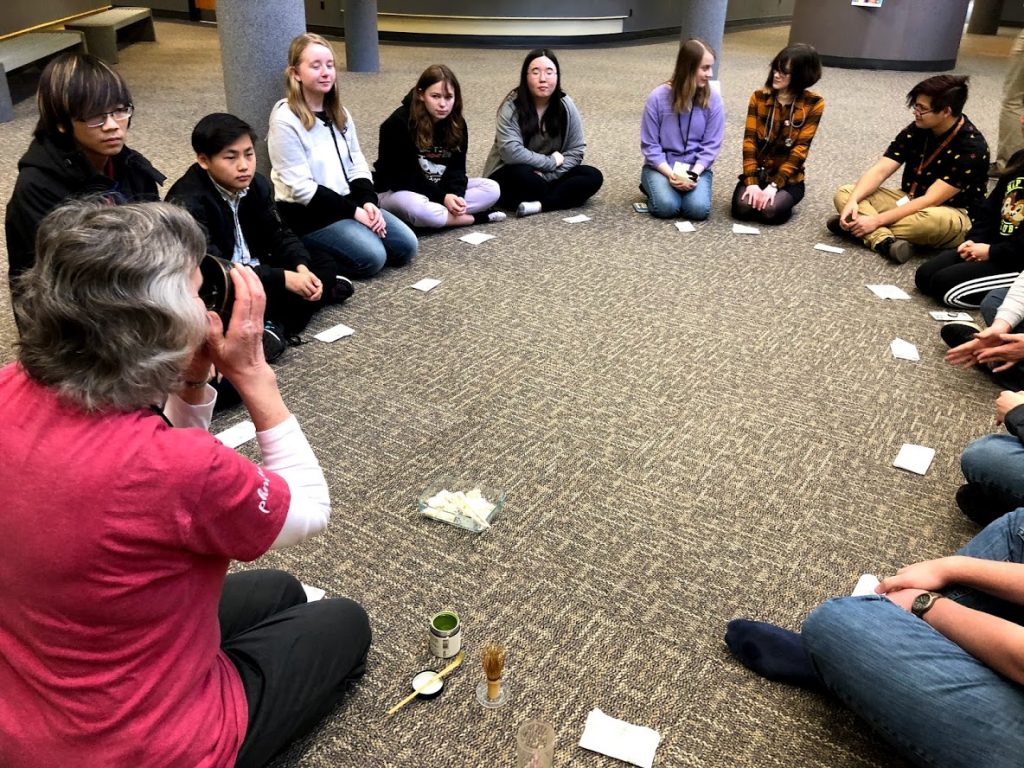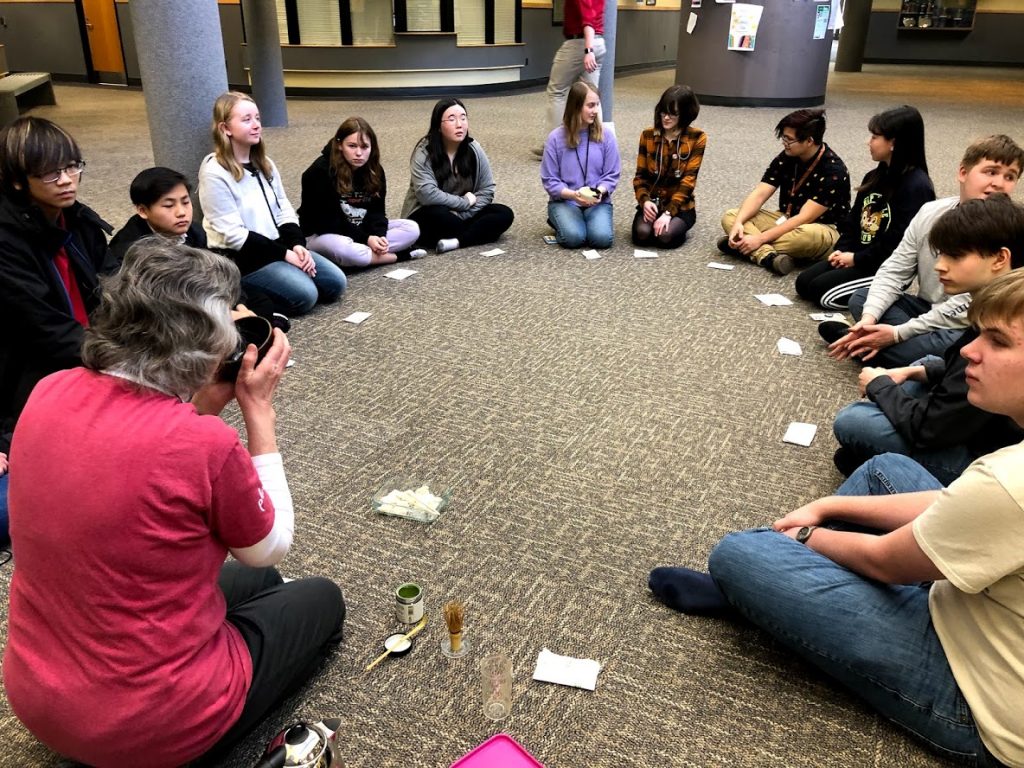Japanese Club Holds Tea Ceremony
The Japanese Tea Ceremony, also called the Way of Tea, is a Japanese cultural activity involving the ceremonial preparation and presentation of matcha, powdered green tea.
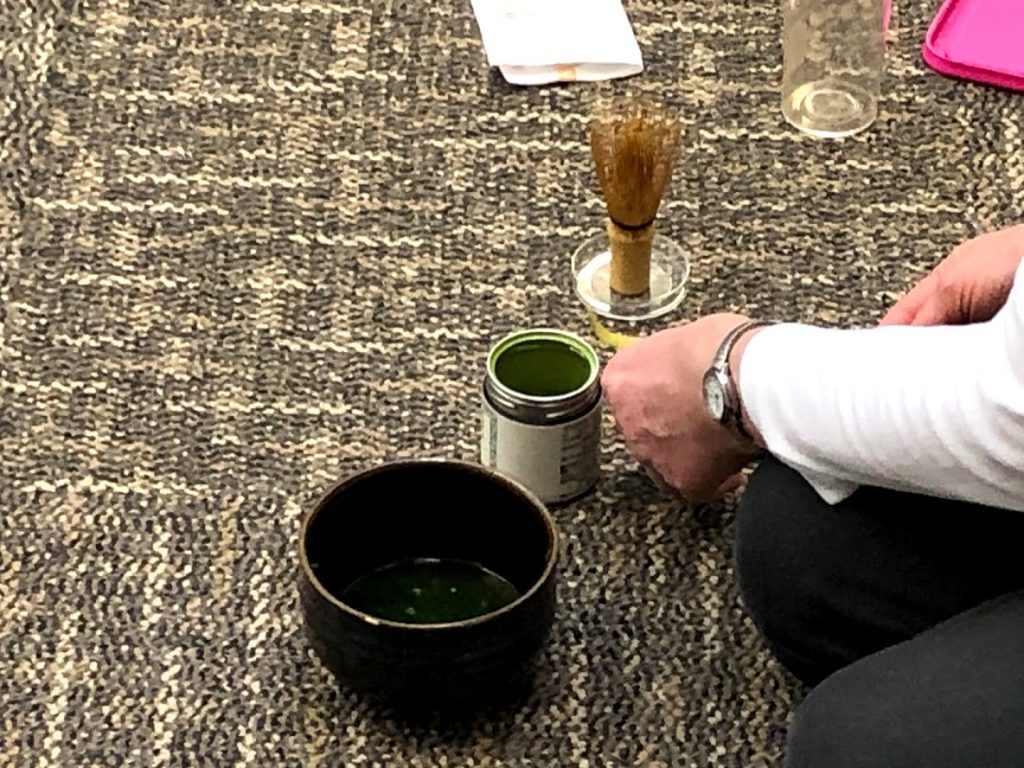
In Japanese, it is called cha-no-yu or sadō/chadō, while the manner in which it is performed, or the art of its performance, is called (o)temae. Zen Buddhism was a primary influence in the development of the tea ceremony. Tea gatherings are classified as an informal tea gathering chakai (tea gathering) and a formal tea gathering chaji (tea event). A chakai is a relatively simple course of hospitality that includes confections, thin tea, and perhaps a light meal. A chaji is a much more formal gathering, usually including a full-course kaiseki meal followed by confections, thick tea, and thin tea. A chaji can last up to four hours. Chadō is counted as one of the three classical Japanese arts of refinement, along with kōdō for incense appreciation, and kadō for flower arrangement.

Penn Japanese Club celebrates the Japanese Tea Ceremony too. Mrs. Wolfgang has prepared the matcha tea and the kit and the Japanese club president also cooked some mochi for the Japanese club to participate today.
Before drinking the tea, sweets are eaten first. Then, tea is handed down to the next person, and the following phrase is said: “Sorry for drinking before you”.
After the matcha tea is finished, the teacup itself is admired. Some teacups have a long, interesting history. When this is done, the tea drinker will bow down to the next person and once more say, “Sorry for drinking before you”.
There is a step when the tea is drunk from the cup three times. The cup must be held with two hands. These are pictures of the activities.
Pictures From: Mr. Mcnulty
The Japanese Club assembles every Black Wednesday From 3:20-4:20 at Room 103 with Ms. Wolfgang

